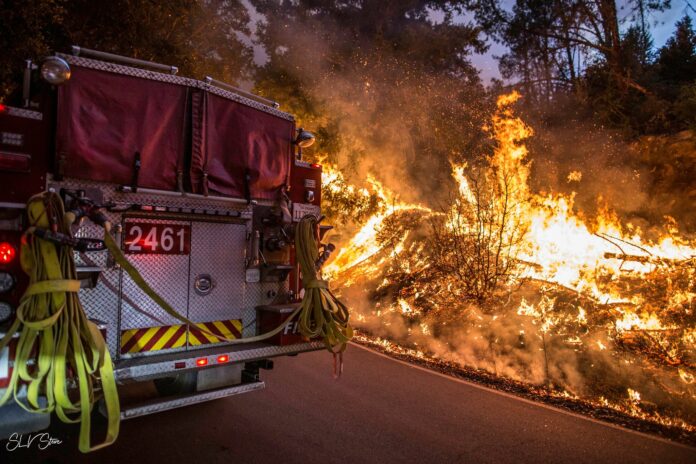Cal Fire CZU Unit Chief Ian Larkin announced the CZU August Lightning Complex Fire was controlled on Dec. 23, a little over four months since the blaze started.
Although the fire was declared 100% contained on Sept. 22, emergency responders had to put in much more work to control the fire.
Larkin clarified the difference between containment and control: “100% containment really means that we have line around the entire fire, the fire is contained, and we’re confident that the possibility of it escaping that containment is low.”
“Controlling the fire comes after containment,” he said. “There are flare ups and changes based on events that occur. It takes a long time to mop up and patrol after containment to reach control. Cal Fire and other local agencies, like the Boulder Creek and Ben Lomond Fire Department, are still out patrolling and suppressing hot spots within the containment line. That’s why we can have a fire that’s 100% contained, but not controlled yet. We’re still out there looking for hot spots and responding to calls, especially when you have a structure loss like that.”
For the past month, Larkin has responded to “some isolated smokes in the interior of the fire that are inaccessible.”
“They are heavy fuel that’s had enough wind on it to kick up a little smoke, but there is no threat to anyone or infrastructure as they’re in remote areas,” he said. “Winter rain will also help.”
In the coming year, Larkin expects a few “sneaker smokes” as well. Expansive root systems may have enough oxygen to keep the root burning throughout the winter. These roots may dry out and resurface, producing visible “sneakers” throughout the coming fire season.
In addition to patrols, teams must finish the majority of fire suppression repair.
“Anytime we cut a hand line or use a bulldozer we have to go back and put [the area] back in its natural state as much as we can,” Larkin said.
Cal Fire also places mitigating factors for erosion control, like placing cut brush back on the dirt. The control process took longer than Larkin expected, as many local suppression resources were sent to other fires, like the Glass Fire in Napa County and the CZU Complex.
The fire suppression repair is almost complete, but there still remain a few tasks. In addition to habitat mitigation, many roads must be regraded after heavy equipment use turned the dirt to powder. However, teams must wait for the correct rain conditions to resolidify the ground.
Along with road regrading and isolated smokes, recent rains have greatly helped the control process as well.
“The way we’re getting our rain right now is very helpful,” Larkin said. “It’s speeding the regrowth process while limiting potential for debris flow activity. This steady, moderate rain spread out overtime is much better for the burn scar area than the typical Santa Cruz County deluge.”
Like numerous other county officials, Larkin is concerned with rainfall, as it could create debris flows. Cal Fire will work in tandem with other emergency responders in case of flows.
“We’re a small county and emergency responders rely upon each other. With debris flow the main goal is getting people notified and evacuated quickly,” he said.
Cal Fire helps achieve those goals by monitoring rainfall levels, which, at a certain threshold, will trigger evacuation warnings.
Teams were closely monitoring rainfall levels Monday, as they hovered barely below the warning threshold. Rainfall is measured by gauges at “higher altitudes, so that we’re getting a precursor of what will come down the drainages,” Larkin said.
Residents can check their evacuation status by visiting https://community.zonehaven.com/. Zone Haven is a new resource for county residents, which was first used during the CZU Complex. According to Larkin, the Zone Haven website wasn’t complete when the CZU Complex began. However, staff were able to create a public site within 15 minutes of reaching an agreement. Larkin was excited about the new resource.
“It will be much easier to get that evacuation information to the public in the future,” he said.
Beyond debris flow evacuation awareness, residents can take further steps to ensure they are prepared for natural disasters. Larkin encourages homeowners to “focus on vegetation management, home hardening, and defensible space around structures. We can’t inspect every property every year and expect property owners to take that responsibility.”
Ultimately, Larkin said he has many to thank in the wake of the fire.
“We appreciate the public support,” he said. “This is a very tight-knit and resilient county. Its fire and law enforcement agencies work very well together and that collaboration was a source of its success.”
For information on Defensible Space, home hardening, wildfire preparation and prevention, as well as tips to prevent wildfires, visit readyforwildfire.org.










